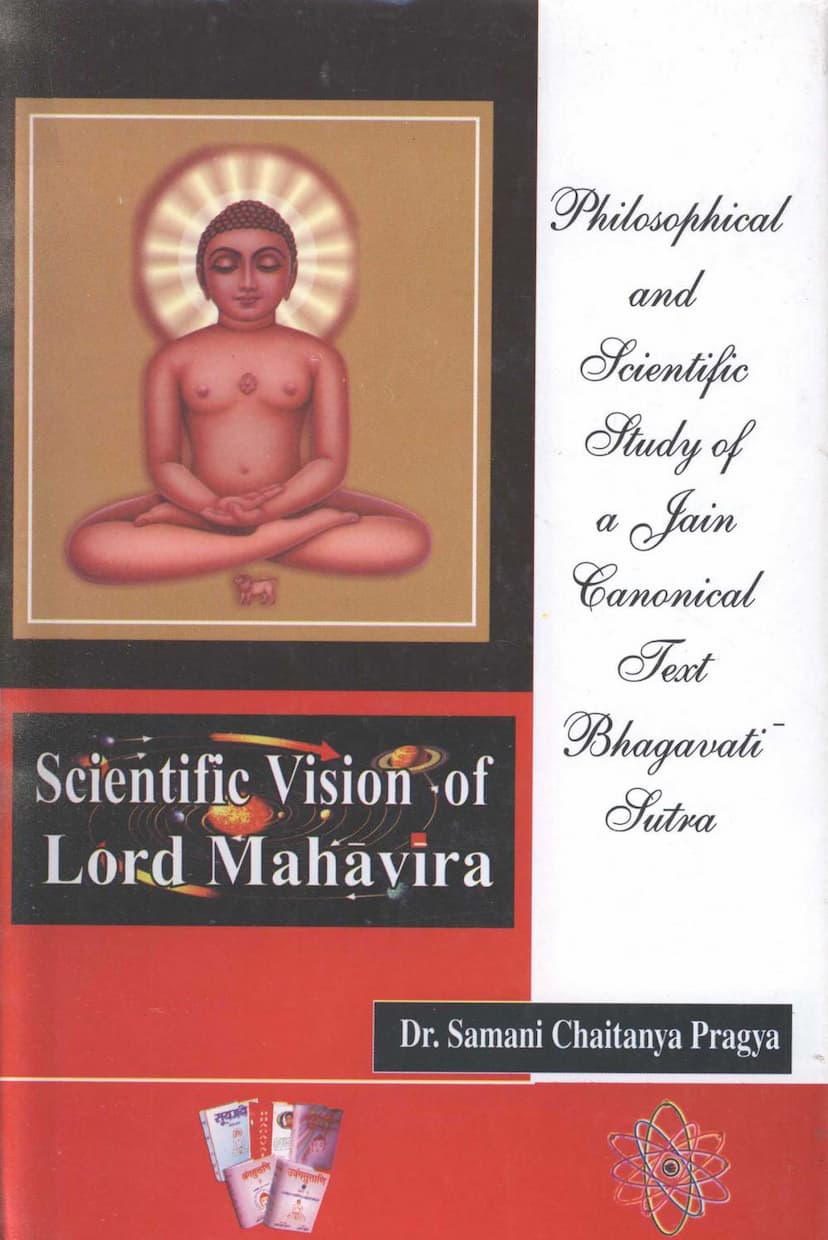Scientific Vision Of Lord Mahavira
Added to library: September 2, 2025

Summary
This comprehensive summary outlines the key aspects of the book "Scientific Vision of Lord Mahāvīra," authored by Samani Chaitanya Pragya and published by Jain Vishva Bharati. The book focuses on analyzing the Bhagavati Sūtra (Bh.S.), one of the most significant Jain canonical texts, from both philosophical and scientific perspectives.
Core Argument and Purpose:
The book aims to bridge the gap between ancient Jain scriptures and modern scientific understanding. It argues that Jain philosophical and canonical literature, particularly the Bhagavati Sūtra, contains profound insights into various aspects of reality that resonate with modern scientific discoveries. The author's primary goal is to present these scriptural teachings in contemporary scientific idioms without distortion, thereby reviving interest in ancient texts and demonstrating their continued relevance.
Key Themes and Content:
-
The Bhagavati Sūtra as an Encyclopedic Work: The book establishes the Bhagavati Sūtra as a vast repository of knowledge, covering philosophical, scientific, historical, and cultural discussions. It highlights the text's encyclopedic nature by detailing its structure, language, and diverse subject matter, comparing its contents with other Jain canonical and Angabahya literature.
-
Scientific Discourses in the Bhagavati Sūtra: The Bh.S. is presented as containing significant scientific discourses on topics such as:
- Cosmology: Detailed descriptions of the universe, its origin, structure, and constituents, including concepts like the cosmos, transcosmos, the model of the universe, and the concept of stratification. The book explores the Jain cosmological model and its scientific assessment, noting parallels with modern physics regarding the vastness and self-regulating nature of the universe.
- Space and Time: An analysis of Jain concepts of space (Akāśa) and time (Kāla) as independent realities, their characteristics, divisions (cosmic and transcosmic), and the atomic nature of time. The book compares these concepts with those of Western philosophers like Newton, Kant, and Einstein, as well as other Indian philosophical schools.
- Theory of Pudgala (Matter): A detailed examination of Pudgala as the fundamental physical substance, its etymological meaning (fusion and fission), its characteristic qualities (touch, taste, smell, color), and its general and specific properties. The book discusses the concept of immutability of Pudgala and its resemblance to the principles of Conservation of Matter and Energy in modern science. It also delves into the modifications of Pudgala, such as sound, light, and darkness.
- Theory of Atom (Paramāņu): An exploration of the Jain concept of the atom as the smallest, indivisible, and indestructible unit of matter. The book contrasts the Jain atom with the atoms described in modern physics, highlighting similarities in dynamism and the concept of motion, while also pointing out differences regarding divisibility and the nature of sub-atomic particles. It introduces the Jain distinction between transcendental and empirical atoms.
- Biological Issues: The book delves into the Jain understanding of the soul (Jīva) as consciousness, its arguments for the existence of the soul, and its biological characteristics such as functional consciousness (Upayoga), vitalities (Prāņas), bio-potentials (Paryāptis), and instincts (Saṁjñās). It discusses the soul-body relationship, contrasting Jain views with Western philosophical and psychological perspectives. It also touches upon concepts like cloning and the emergence of life, drawing parallels with modern biological research.
-
Lord Mahāvīra's Scientific Vision: The book attributes these scientific insights to Lord Mahāvīra, portraying him as a highly versatile and forward-thinking intellect who expounded subtle truths with both philosophical and scientific implications. His emphasis on Anekānta (non-absolutism) is highlighted as a fundamental principle that allows for a multi-faceted understanding of reality, aligning with scientific inquiry.
-
Methodology: The author emphasizes the need to interpret Jain technical terms in modern phraseology and stresses the importance of understanding both ancient languages and modern scientific concepts for accurate scriptural study. The research methodology involves comparative analysis with other Jain texts, Indian philosophical systems, and advancements in modern science.
-
Key Findings:
- The Bhagavati Sūtra contains descriptions of cosmology, matter, space, time, motion, velocity, and energy that have remarkable parallels with modern scientific discoveries.
- Jainism posits an eternal, self-existent, and beginningless universe governed by natural laws, a concept that resonates with certain scientific theories.
- The Jain concept of Pudgala and Paramāņu reflects a deep understanding of the dynamic nature of matter and its fundamental constituents.
- The Jain approach to understanding reality, grounded in Anekānta, supports a holistic view that can be reconciled with scientific exploration.
Significance and Contribution:
The book aims to:
- Demonstrate the scientific underpinnings of Jain philosophy.
- Make ancient Jain scriptures accessible and relevant to modern audiences.
- Inspire scientists and thinkers to explore the profound wisdom contained within Jain texts.
- Promote a deeper understanding of Jainism by highlighting its scientific and philosophical depth.
In essence, "Scientific Vision of Lord Mahāvīra" presents the Bhagavati Sūtra not just as a religious text but as a scientific and philosophical treatise that offers a remarkably nuanced and sophisticated worldview, anticipating many discoveries of modern science.